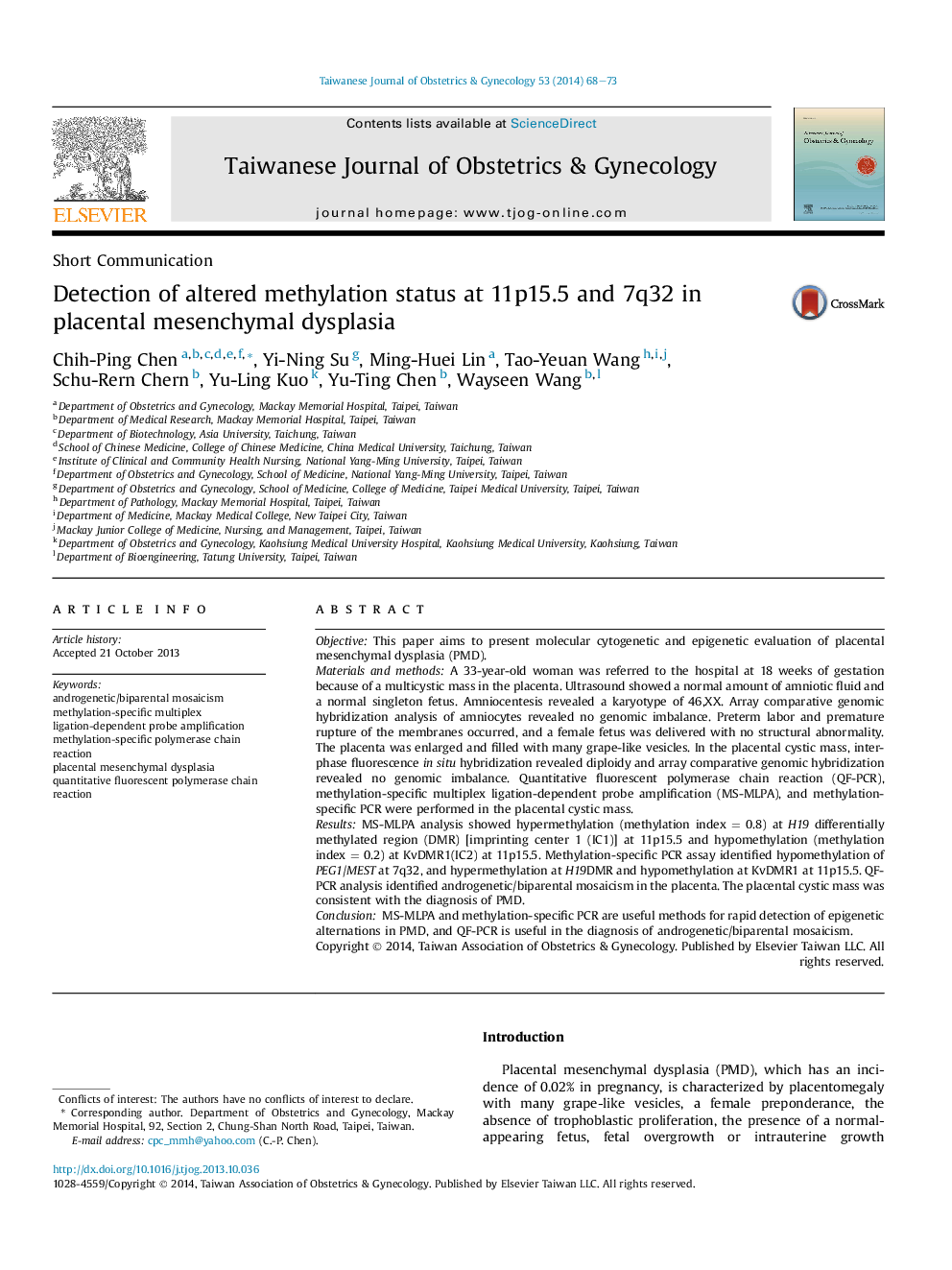| Article ID | Journal | Published Year | Pages | File Type |
|---|---|---|---|---|
| 3975397 | Taiwanese Journal of Obstetrics and Gynecology | 2014 | 6 Pages |
ObjectiveThis paper aims to present molecular cytogenetic and epigenetic evaluation of placental mesenchymal dysplasia (PMD).Materials and methodsA 33-year-old woman was referred to the hospital at 18 weeks of gestation because of a multicystic mass in the placenta. Ultrasound showed a normal amount of amniotic fluid and a normal singleton fetus. Amniocentesis revealed a karyotype of 46,XX. Array comparative genomic hybridization analysis of amniocytes revealed no genomic imbalance. Preterm labor and premature rupture of the membranes occurred, and a female fetus was delivered with no structural abnormality. The placenta was enlarged and filled with many grape-like vesicles. In the placental cystic mass, interphase fluorescence in situ hybridization revealed diploidy and array comparative genomic hybridization revealed no genomic imbalance. Quantitative fluorescent polymerase chain reaction (QF-PCR), methylation-specific multiplex ligation-dependent probe amplification (MS-MLPA), and methylation-specific PCR were performed in the placental cystic mass.ResultsMS-MLPA analysis showed hypermethylation (methylation index = 0.8) at H19 differentially methylated region (DMR) [imprinting center 1 (IC1)] at 11p15.5 and hypomethylation (methylation index = 0.2) at KvDMR1(IC2) at 11p15.5. Methylation-specific PCR assay identified hypomethylation of PEG1/MEST at 7q32, and hypermethylation at H19DMR and hypomethylation at KvDMR1 at 11p15.5. QF-PCR analysis identified androgenetic/biparental mosaicism in the placenta. The placental cystic mass was consistent with the diagnosis of PMD.ConclusionMS-MLPA and methylation-specific PCR are useful methods for rapid detection of epigenetic alternations in PMD, and QF-PCR is useful in the diagnosis of androgenetic/biparental mosaicism.
